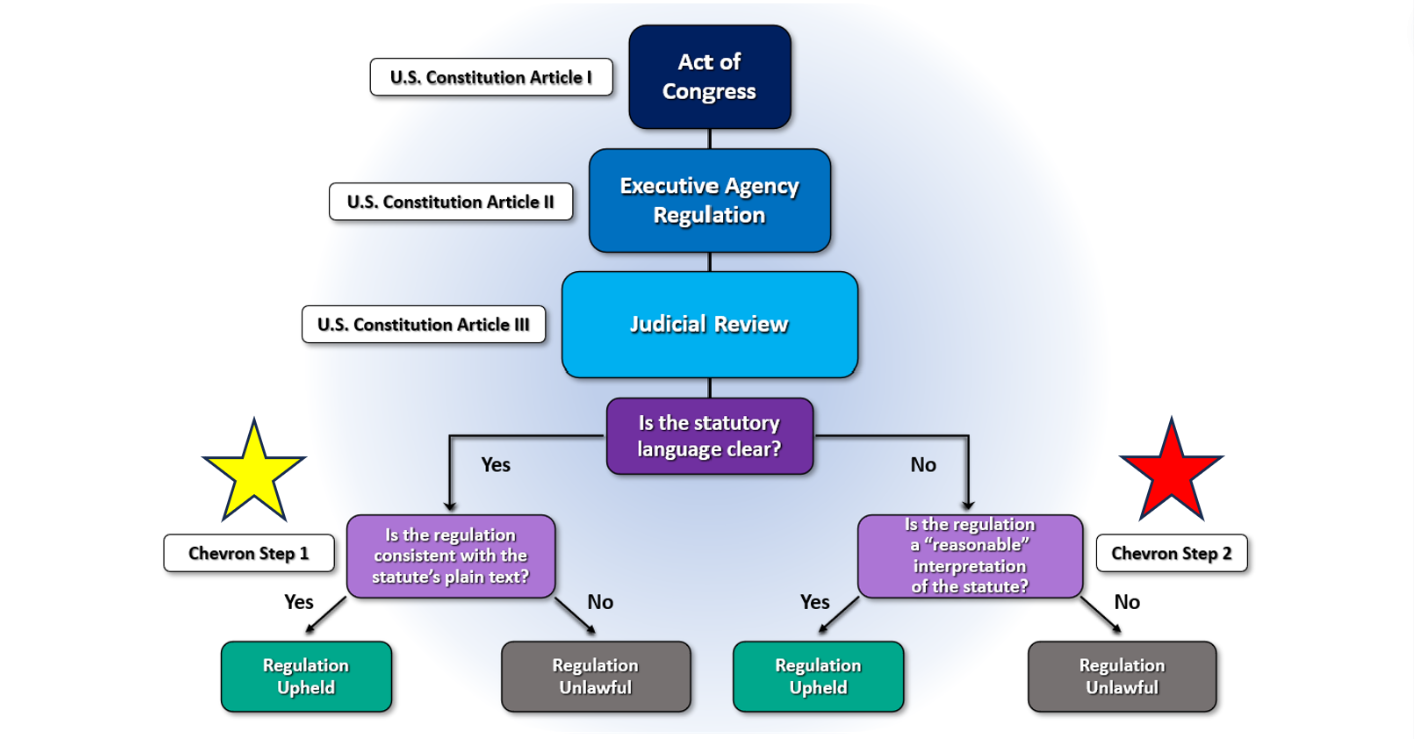Chevron Ruling Overview: Chevron Ruling Explained

Chevron ruling explained – The Chevron Ruling, also known as Chevron U.S.A., Inc. v. Natural Resources Defense Council, Inc., is a landmark Supreme Court decision that established the legal basis for judicial deference to agency interpretations of statutes.
The Chevron ruling, a doctrine that gives deference to executive agencies’ interpretations of the law, has been a subject of debate. Representative Thomas Massie has been a vocal critic of the Chevron ruling, arguing that it gives too much power to the executive branch and undermines the role of Congress.
Massie has introduced legislation to overturn the Chevron ruling, and his efforts have gained support from both Republicans and Democrats. The Chevron ruling remains a controversial topic, and Massie’s efforts to overturn it are likely to continue to generate debate.
The Chevron Ruling was issued in 1984 and has since become a cornerstone of administrative law. It sets forth a two-step test for courts to use when reviewing agency interpretations of statutes:
Step 1
The first step is to determine whether Congress has spoken clearly on the issue at hand. If Congress has spoken clearly, then the court must defer to the agency’s interpretation only if it is reasonable.
Step 2, Chevron ruling explained
If Congress has not spoken clearly on the issue at hand, then the court must defer to the agency’s interpretation as long as it is a permissible construction of the statute.
The Chevron Ruling has been applied in a wide variety of cases, including cases involving environmental regulation, tax law, and immigration law.
The Chevron ruling is a doctrine that gives deference to agencies’ interpretations of statutes. This is based on the idea that agencies have expertise in their respective fields and are therefore better equipped to interpret statutes than courts. The Chevron ruling was recently applied in the Grants Pass Supreme Court case, which involved a dispute over the interpretation of the Clean Water Act.
In that case, the Court ruled that the Environmental Protection Agency’s interpretation of the statute was entitled to deference, even though the Court disagreed with the interpretation.
Impact of the Chevron Ruling

The Chevron Ruling has had a significant impact on the relationship between courts and administrative agencies. Prior to the ruling, courts had a more active role in reviewing agency decisions. However, the Chevron Ruling established a deferential standard of review, giving agencies more leeway to interpret their own regulations.
There are several potential benefits to the Chevron Ruling. First, it allows agencies to develop expertise in their specific areas of regulation. Second, it promotes consistency in decision-making. Third, it reduces the burden on the courts.
However, there are also some potential drawbacks to the Chevron Ruling. First, it can give agencies too much power. Second, it can make it difficult for courts to correct agency errors. Third, it can lead to inconsistent decision-making.
Real-World Examples
- In 2005, the Supreme Court ruled in Chevron U.S.A., Inc. v. Natural Resources Defense Council, Inc. that courts must defer to an agency’s interpretation of its own regulations if that interpretation is reasonable.
- In 2012, the Supreme Court ruled in Michigan v. EPA that the EPA’s interpretation of the Clean Air Act was reasonable and therefore entitled to deference.
Current and Future Implications
The Chevron Ruling has had a significant impact on environmental law and other areas of law. It has been cited in thousands of cases and has been used to justify a wide range of government actions.
The Chevron Ruling has evolved over time. In recent years, the Supreme Court has limited the scope of the ruling, making it more difficult for agencies to defer to their own interpretations of statutes.
Challenges to the Chevron Ruling
The Chevron Ruling has been challenged on several grounds. Critics argue that it gives too much power to agencies and that it undermines the role of the courts in interpreting statutes.
One potential challenge to the Chevron Ruling is that it could be overturned by a future Supreme Court. The Court’s composition has changed significantly in recent years, and it is possible that a future Court could be more skeptical of Chevron deference.
Implications for Environmental Law
The Chevron Ruling has had a significant impact on environmental law. It has made it more difficult for environmental groups to challenge government actions that they believe are harmful to the environment.
For example, in the case of Massachusetts v. EPA, the Supreme Court ruled that the EPA did not have the authority to regulate greenhouse gas emissions from cars. The Court based its decision on the Chevron Ruling, which gave deference to the EPA’s interpretation of the Clean Air Act.
Implications for Other Areas of Law
The Chevron Ruling has also had an impact on other areas of law, such as administrative law, tax law, and securities law.
For example, in the case of Chevron U.S.A., Inc. v. Natural Resources Defense Council, Inc., the Supreme Court ruled that the EPA’s interpretation of the Clean Water Act was entitled to Chevron deference. This decision made it more difficult for environmental groups to challenge the EPA’s interpretation of the statute.
Chevron ruling explained is a precedent for judicial deference to agency interpretations of statutes. This deference is often justified by the agency’s expertise in the field. In a similar vein, the Supreme Court has also ruled that local governments cannot criminalize homelessness if no alternative shelter is available.
Read more about the supreme court homeless ruling here. However, in the Chevron ruling explained, the Court emphasized that deference is not absolute and that courts may still review agency interpretations if they are unreasonable.
Chevron ruling explained entails a judicial deference accorded to agencies interpreting ambiguous statutes, particularly in the realm of environmental law. This deference, outlined in the seminal case the chevron decision , grants agencies broad authority to define the scope of their own regulatory powers.
Chevron ruling explained elucidates the principles guiding this deference, emphasizing the expertise of agencies and the need for consistency in statutory interpretation.
The chevron ruling is a design element often seen in architecture and textiles. It consists of a series of V-shaped lines that point in the same direction. A variation of the chevron ruling is the tartan pattern , which is a checkered pattern made up of intersecting horizontal and vertical lines.
The chevron ruling can be used to create a variety of effects, from simple borders to complex geometric designs.